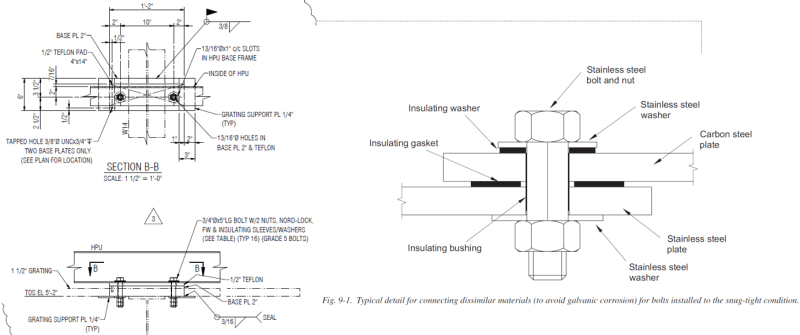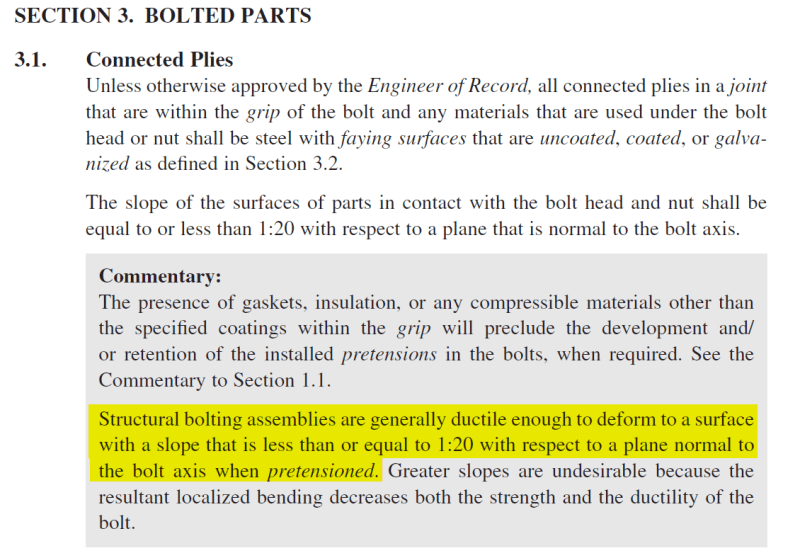
I am looking into design of a CS/316SS connection. AISC Design Guide 27 mentions using a neoprene gasket to prevent dissimilar metal contact. Application would be in a highly corrosive environment. Typically I would avoid doing this altogether, but I wanted to pursue research in case I can't avoid it or for future reference.
I came across this detail of a bolted connection with a teflon pad at the interface but in a non-sliding connection. I don't think you can calculate shear capacity of this connection normally since the teflon is so soft compared to the steel. Is it possible to do it, reasonably?
AISC design guide doesn't elaborate on any differences in calculating connection strength while using a gasket. Am I correct in assuming that this is because if the gasket is thin enough, that it doesn't make a meaningful difference?

